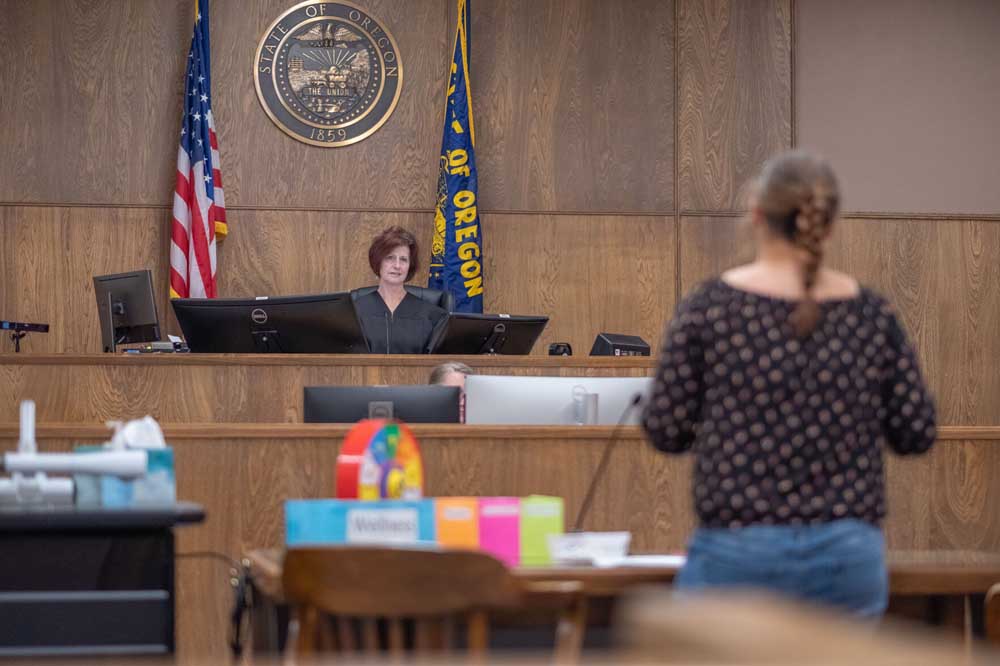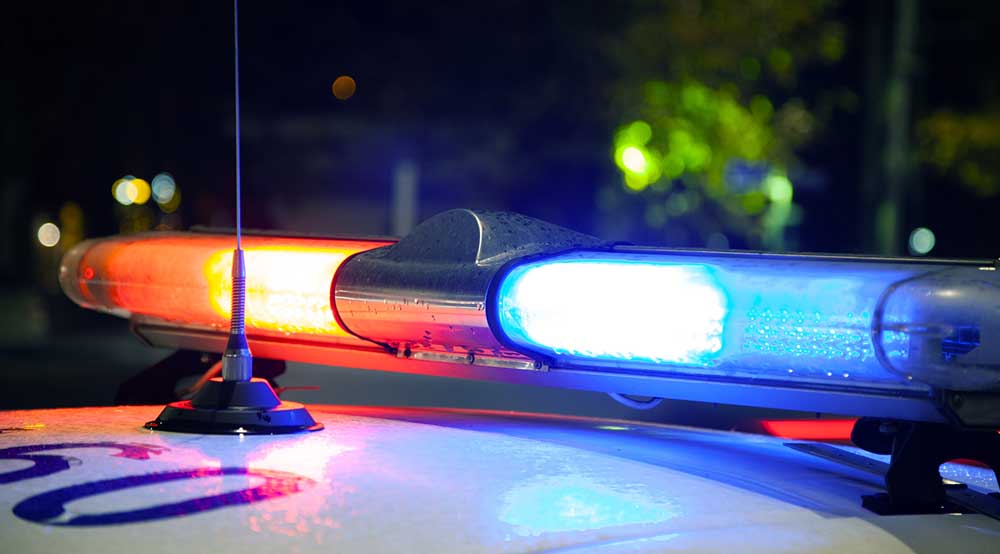Our View: New approach to drug possession has much more potential than its failed predecessor
Published 5:00 pm Tuesday, September 24, 2024

- Circuit Judge Joanna Marikos presides over the 6th Judicial District Treatment Court on Sept. 6, 2024, at the Umatilla County Courthouse in Pendleton. Umatilla County is preparing to get its deflection program put in place by Oct. 1 to help people who could face criminal charges for possession of small amounts of drugs to seek addiction treatment as an alternative.
Oregon’s voter-endorsed experiment with treating the possession of relatively small amounts of dangerous drugs, including fentanyl, as basically equivalent to a speeding ticket was a failure.
The legislature acknowledged the dismal results from Measure 110, which voters approved in November 2020, by passing House Bill 4002 in February of this year. Gov. Tina Kotek signed the bill into law.
Starting Sept. 1, drug possession that was a violation under Measure 110 reverted to a misdemeanor.
But Oregon is not returning to the situation that prevailed before a majority of voters in 17 of the 36 counties approved Measure 110 (the measure failed in 19 counties, including all of those east of the Cascades except Deschutes and Wasco).
The new law includes provisions intended to accomplish the goal for which Measure 110 fell so abysmally short — encouraging people to seek treatment for addiction.
Measure 110’s approach was to have police cite people for possession of drugs in “user amounts” — less than 1 gram of heroin or fentanyl, for instance. People also were issued a $100 fine, which they could avoid by calling a toll-free number to be assessed for addiction treatment. There was no requirement that people cited actually go to treatment, however.
It didn’t work.
Out of several thousand people cited, just a few hundred actually called the hotline. And fewer still actually enrolled in treatment.
Overdose deaths, meanwhile, more than doubled in the state, although some researchers concluded that Measure 110 was not to blame.
The new law superficially resembles its ill-fated predecessor.
Like Measure 110, the new law entices people to seek addiction treatment to avoid punishment for drug possession.
But the differences are significant.
Starting Sept. 1, possession of drugs became a misdemeanor.
People cited can potentially be sentenced to 180 days in jail.
But the law also allows each county to create a “deflection program.”
A working group of Baker County officials, representing law enforcement, the district attorney’s office and New Directions Northwest, among others, had a local deflection program ready when the new law took effect Sept. 1. Indeed, police referred one person to the program on that day.
The law encourages police to refer people cited for drug possession into the deflection program. Those who agree have a chance to avoid criminal charges altogether. But unlike with Measure 110, they have to do more than dial a phone number.
The new law requires people to actually complete a treatment program to expunge the drug possession charge and its potential penalties. New Directions Northwest will assess each person referred to the deflection program and offer treatment.
Union County instead of deflection has created “deferred prosecution” for qualifying individuals with a possession charge. If they complete treatment, the court will expunge the charge. Morrow County officials have not decided on a plan. Umatilla County is rolling out its deflection program in October, and Grant County is aiming for December.
The deflection system is promising.
Most notably, the potential punishment for drug possession is much more meaningful than Measure 110’s modest fine. The new law also requires people seeking to avoid punishment to actually attend, and finish, a treatment program.
That was the goal of Measure 110, too, and it’s a worthwhile objective.
Helping people overcome addiction benefits both drug users and society in general. Without treatment, many people become, in effect, stuck in a cycle of arrests that stresses the legal system but does little or nothing to help people who are in greater peril than ever due to the deadly prevalence of fentanyl.
As with Measure 110, we won’t know for months or, more likely years, whether the new deflection program approach can be branded a success.
But it has vastly more potential than its predecessor.






